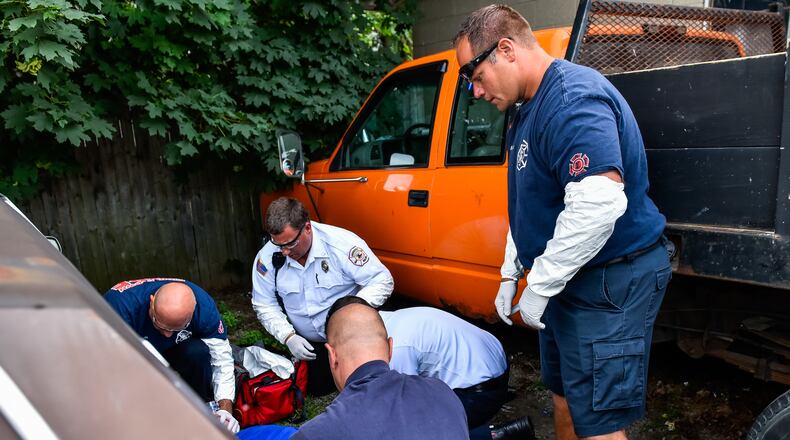RELATED: Butler County quick response teams getting results
Here are seven things to know about the war on drugs here:
1. A new influx of cash to support the fight other than new tax dollars
The Butler County Mental Health and Addiction Recovery Services Board (MHARS) had intended to ask voters for a tax levy this year because funding for the $3.6 million Opiate Business Plan was virtually non-existent. Instead, they asked Prosecutor Mike Gmoser to reconsider whether some of the $10 million mental health levy could be used for addiction help. The answer was yes.
The plan is funding more detox beds, new services for youth and jail inmates and much more.
READ THE PLAN: Butler County Opiate Business Plan
2. Butler County commissioners have sued major drug companies for $5 million
The commissioners filed a lawsuit in federal court against 20 drug companies and distributors last November. Commissioner Don Dixon said the hope is the suit can be settled, much like the massive tobacco litigation was years ago, so funding will be available for education and prevention.
3. There are quick response teams operating in the county with success
MHARS Executive Director Scott Rasmus said the teams go out and find addicts who have recently overdosed and try to convince them to get treatment.
“We have expanded our capacity of quick response teams three-fold countywide, with better than a 50 percent linkage to treatment rate, when those teams meet face-to-face with clients who have overdosed,” Rasmus said. “One team had a successful treatment capture rate approaching 100 percent recently.”
4. Pilot program in the offing for an electronic devise that lessens detox symptoms
One innovative program the MHARS board is considering is the use of a “Bridge” for clients trying to kick the habit. It is an electronic devise worn behind the ear that provides relief from painful detox symptoms.
5. Butler County Health Department offers free Narcan kits to friends and family of addicts.
Health Commissioner Jenny Bailer said they have access to enough of the life-saving kits they procure through the Ohio Department of Health that every resident in the county coul carry one if they wanted to.
6. Health Department has long range plan to get into schools for extensive prevention education
The Health Department has a Community Health Improvement Plan that includes prevention programs targeting very young children.
“One of the pieces of that is a prevention section that is working with prevention partners to bring prevention programs to every school district in the county,” Bailer said. “It will address evidence-based ways of decreasing drug use starting with very young children and then following them throughout the grades. That’s a long-term project.”
MORE: Butler County’s newest heroin-fighting tool: Big data
7. Data is now being used to alert the public when a particularly a dangerous drug surfaces here
Live data from emergency rooms, first responders and the coroner’s office is being used to uncover hot spots where there have been spikes in overdoses.
“Overdose data in real time allows communities — first responders, policymakers, treatment providers, emergency departments — to understand what’s happening on the streets, issue public safety alerts, and to make data-informed decisions about how to target and deploy resources,” said Kelly Firesheets with Interact for Health.
Butler County’s project is part of a regional program, funded by a $100,000, three-year grant developed to address the opiate epidemic in Greater Cincinnati, according to Firesheets.
About the Author
